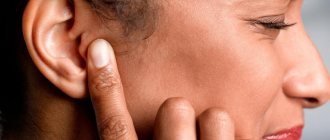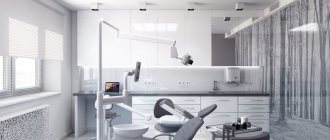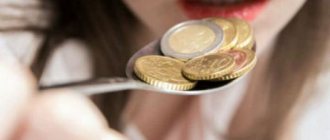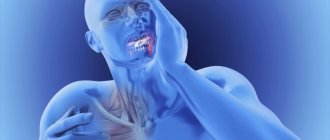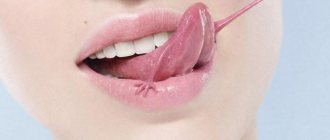Reasons for the formation of bumps behind the ears
There are a number of health problems that can cause lumps and lumps to form behind the ears. It is most likely that this problem may occur with the following diseases:
- mastoiditis;
- otitis media;
- infection;
- abscess;
- lymphadenopathy;
- acne;
- fat cyst.
If you find any suspicious growths, for example, a ball behind the ear, you should immediately consult a doctor. Our clinic specialists are ready to conduct an examination, determine the causes of the disease and prescribe the necessary treatment.
Why do atheromas appear behind the ears?
Research into the mechanism of atheroma formation is still ongoing.
Today it is known that the epidermis (the surface layer of the skin) consists of layers of cells that constantly peel off from the surface during the process of growth. In the case when skin cells stop exfoliating and, accumulating and multiplying, begin to move into the tissues - a cyst wall is formed - atheroma. Inside the formed cavity, dead skin cells rich in proteins - keratin, and sebum accumulate. This is how atheroma is formed.
On the surface of the atheroma you can always find an enlarged pore through which the cyst can drain. In this case, we may notice yellowish masses with an unpleasant odor of decomposing sebum.
Other cysts, called epidermal, are very similar in appearance to atheromas. However, epidermal cysts are formed from sweat glands and their contents are very different in composition from the contents of atheromas.
Otitis media
Otitis media is another type of ear infection that can be of either viral or bacterial origin. This disease is characterized by the appearance of a lump behind the ear, which is quite painful and can cause swelling. This disease leads to a tumor noticeable even to the naked eye.
Treatment of such pathologies involves the use of potent antibiotics, which can not only alleviate the symptoms, but also fight the infection. Correct treatment can only be prescribed by an experienced doctor who will conduct a full examination to confirm the diagnosis.
Symptoms of lymphadenitis
At a more advanced stage of the disease, the patient additionally begins to complain of:
- frequent headaches and a sharp deterioration in general health;
- very high fever;
- problems with sleep and appetite;
- stuffiness and pain in the ear.
This pathology is difficult to confuse with other ailments. Self-medication should only be done after visiting a doctor and only if there is no pus coming out of the ear. Otherwise, there is a risk of the situation leading to an abscess. If the inflammation reaches the membrane of the brain, then there is a danger of the most tragic outcome. In addition, the blood flow very quickly begins to spread the infection throughout the body. Against this background, the functionality of the most important systems or organs may be disrupted.
Sometimes an inflamed lymph node behind the ear becomes a consequence of respiratory diseases, otitis media or flu. In this case, it is necessary to cure the primary ailment. After this, the lymph nodes will return to normal on their own. In some cases, you can get by with traditional medicine recipes. However, if we are talking about a more advanced stage, in which pus forms, then most likely the doctor will prescribe a course of antibiotics. Additionally, experts often recommend taking general restorative medications and anti-inflammatory drugs.
It is worth noting that if a child has an inflamed lymph node behind the ear, then there is no need to panic too much. Such ailments are most often diagnosed in children. The main thing is to know how to properly treat this pathology.
Lymphadenopathy
Lymphadenopathy is a secondary infection of the throat or ear that begins its development from the lymph nodes. These organ-like structures are small structures located throughout the human body, including the pelvis, armpits, neck and ears.
With the development of infectious diseases, the lymph nodes will become inflamed, which is the immune system’s reaction to the pathogens. The bumps located behind the ears will gradually increase in size. Therefore, if you suspect lymphadenopathy, you should immediately contact qualified specialists.
Purpose
The lymphatic system, consisting of blood vessels and capillaries, permeates the entire body like a network. The viscous living liquid, as it flows, captures nuclides, toxins, cell waste products, microorganisms, bacteria and other harmful substances from them, as well as from connective tissues. On the path of lymph there are “sanitary” points - lymph nodes, including the parotid lymph nodes, the lymph node behind the ear, near the ear, under the urine of the ear, etc., where lymph is filtered. All lymph nodes have 2-4 inputs for lymph and 1-2 outputs. Having entered the gland, the fluid does not flow directly into the exits. It flows through curving corridors (sines), which allows it to better free itself, to cleanse itself of what it has collected. This is facilitated by lymphocytes that produce nodes. The path of the lymphatic system passes mainly along the veins.
The parotid glands clear lymph, which flows into the posterior auricular vein. They cleanse the lymph of the neck and salivary glands. The postauricular lymph nodes protect the parietal and temporal regions. In addition, the lymph nodes behind the ears protect the areas of the eyes, ears, throat, and jaw. The lymph node under the ear protects the corner of the jaw, which is located just below the ear. It is called tonsillar.
Acne
Acne occurs as a result of clogged hair follicles and occurs mainly in teenagers. Once oil and dead skin cells accumulate in the pores, pimples or nodules can form. In some cases, neoplasms can be quite impressive in size, hard in structure, and quite painful.
In our clinic, you can make an appointment with an experienced doctor who will conduct an examination, tell you what to do if there is a lump behind your ear, and, if necessary, prescribe additional examinations.
Symptoms
If the process of inflammation of the lymph nodes in the ear area begins to worsen, then this is a suspicion of a disease called lymphadenitis with all the ensuing consequences:
- Pain appeared on palpation.
- The softness of the consistency disappeared and became harder.
- Perhaps the iron does not roll under the fingers.
- The lymph node has increased in size.
- Hyperplasia of lymphoid tissue (reaction to the appearance of an inflammatory process).
If pus has formed in the swollen gland, this will affect the person’s condition:
- The temperature has risen.
- I had a headache.
- Lost appetite.
- Malaise.
- Earache.
Aloe
To prepare the medicine, a plant that is at least two years old is suitable. The lower leaves of aloe are used. After grinding, about 150 ml of juice can be squeezed out of them.
The resulting liquid is poured into a glass of natural honey. After this, 2 incomplete glasses of “Cahors” are added to it. The resulting medicine is infused for 5 days in a dark and fairly cool place. After this time, it is recommended to drink the tincture one tablespoon before meals.
This product is allowed to be given to children, but only over 6 years of age. Do not forget that the drug contains alcohol, so you should exercise caution or avoid such treatment altogether.
What to do if the lymph node behind the ear is inflamed
An enlarged lymph node behind the ear is a serious reason to visit the clinic. But there are times when this is simply impossible. Trouble can happen on a business trip or on vacation. You never know what situations happen. What to do in this case? First, assess the possibility of concomitant diseases and, if possible, begin their treatment. Then observe the course of the disease. It is possible that lymphadenopathy will go away simultaneously with the disease that caused it.
But, if this does not happen, then you should start therapy on your own. Over the years, humanity has accumulated many ways to get rid of lymphadenitis.
Medications
Antibacterial therapy is used to treat a lymph node behind the ear. The most common drugs are broad-spectrum antibacterial drugs: Amoxicillin and Biseptol. If a specific disease is detected, treatment is carried out with drugs that stop the source of the disease.
Broad-spectrum antibiotics only kill bacteria. They are neutral to viruses. Antibiotics help reduce fever, reduce pain, and relieve swelling. For lymphadenitis, you should take Cefazolin, Erythromycin, Foloxacin, Streptomycin.
Attention! If taking antibiotics for three days does not improve the condition, then you should stop taking them and start taking antiseptics.
Non-steroids will help reduce pain: Ibuprofen, Nise, Voltaren.
Bactericidal ointments help well as local treatment: Streptocyte ointment and Sinalar. Vishnevsky ointment and Ichthyol ointment will help relieve inflammation. You should smear the chosen remedy on the sore spot in the morning and evening. After treatment with ointment, a dry bandage is applied. Traditional medicine will tell you how else to treat an inflamed lymph node.
Folk remedies and recipes
The easiest way to treat an inflamed lymph node at home is dandelion juice. It is pressed from the crushed greens of the plant. A bandage is moistened in the resulting liquid and applied to the sore spot behind the ear. Keep for 2 hours. The procedure can be repeated several times a day.
Inflammation in the lymph node behind the ear will quickly go away if the lymph is cleansed. The simplest remedy is beetroot juice. The juice is squeezed out of the vegetable and allowed to settle. You should wait until the foam disappears. Drink 100 grams of juice per day.
The danger of the phenomenon and the possibility of complications
Pain behind the ear is sometimes treated with disdain, but this is done in vain. Inflamed lymph nodes near the ear can be a sign of serious damage to the body. Lymphadenitis can cause complications. Serious problems with the lymph nodes behind the ears have their own signs:
- Prolonged increase in temperature. If the temperature constantly rises in the evening, and the height of the mercury column rises to 37.1-37.2, then this is an indicator of hidden inflammation. The condition is dangerous. Its danger lies in the fact that people most often do not pay attention to such symptoms, considering them insignificant. And this may be a sign of a sluggish serious illness.
- Weak cough that does not go away for a long time. If the cough does not go away despite taking special medications, then you should urgently consult a doctor and be examined for pulmonary tuberculosis. The danger is that patients do not take this phenomenon seriously, considering it insignificant.
- Difficulty breathing, spasms of the respiratory muscles. This phenomenon indicates the possibility of various pathologies of other organs. To identify the reasons for what is happening, you will have to undergo a serious examination. The primary source can be both problems with cardiac activity and infectious diseases.
- Rash or spots on the skin. Any skin disease indicates damage to the entire body. They also experience a condition where the lymph nodes behind the ear hurt. Everything will depend on where the infection has accumulated.
- Chills, drowsiness, general weakness are signs accompanying both infectious and viral diseases and purulent lymphadenitis.
- Systematic headaches and dizziness accompany various brain diseases.
- Vomiting and diarrhea are common signs of an infectious lesion in the body.
- Hair loss from the head, coupled with inflamed lymph nodes behind the ears, is an indication of toxic damage to the body, in particular by mercury vapor.
